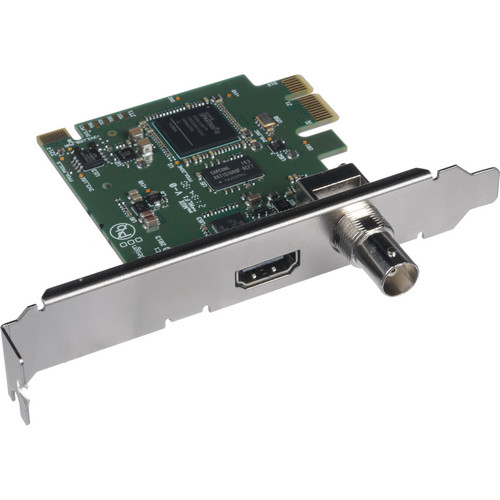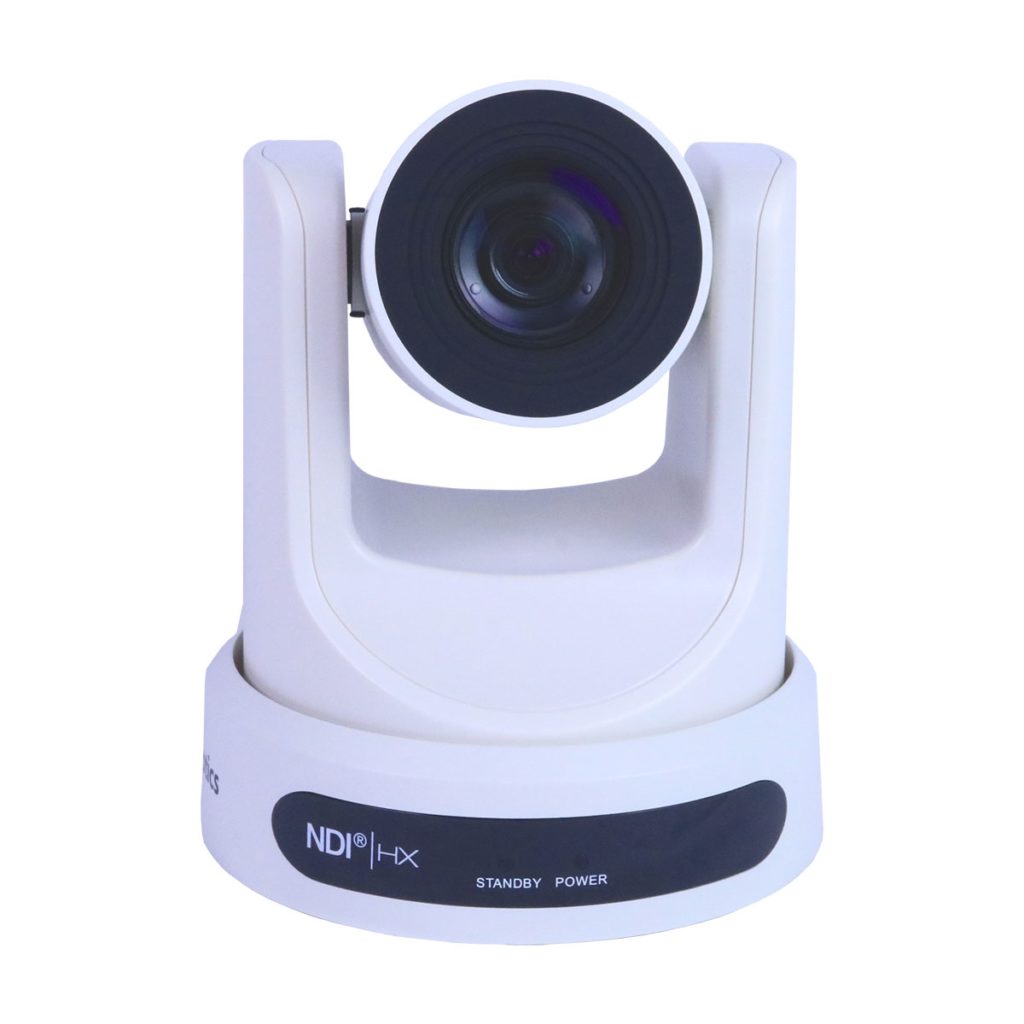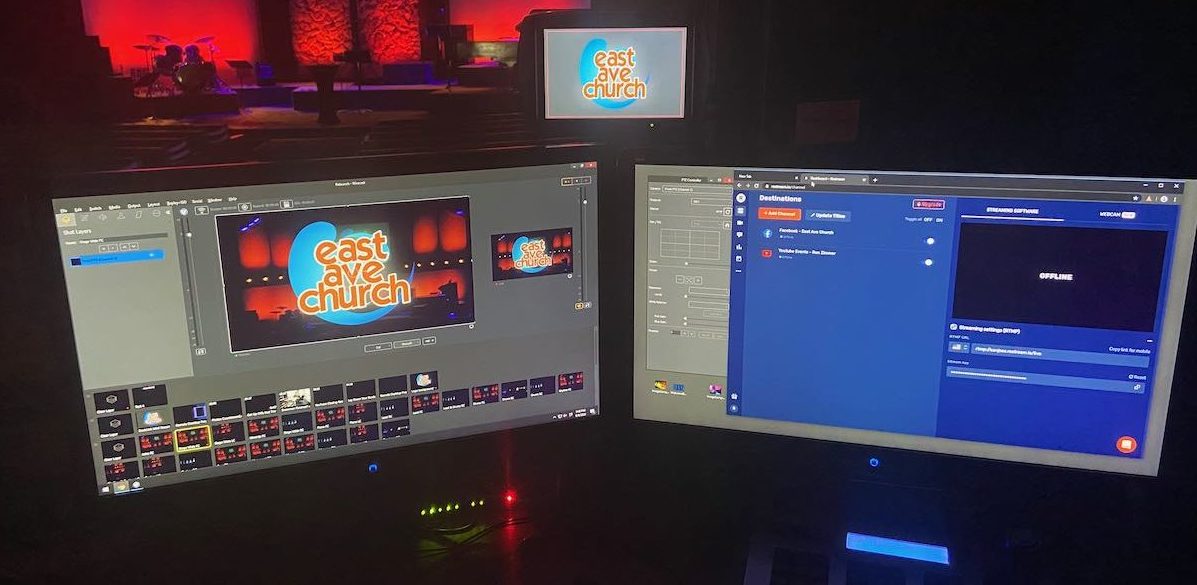“Evangelism/Outreach is like shaving. You can skip it for a while, but it will show, and quicker than think.”
Seems we are in the position of having church buildings but needing people in them to keep them. What if we didn’t have any church buildings. Seems likely this was the case for the early church in Acts 2:42-47.
Can we agree that we would all love to see our people…
…embrace the idea that the church isn’t the church building, it’s the people,
…move from hearing God’s Word only in the building to engagement outside the building,
…measuring the success of an event or ministry by actual spiritual growth, heart change, and movement to the next spiritual step of people outside the building rather than the number of members in the building,
…to get people on mission outside the building, where they live, work, and play,
…to move people beyond consuming ministry in the building to being the ministry outside the building.
We preach it and we pray it.
KEY IDEA: And yet, nearly every penny “Evangelism/Outreach is like shaving. You can skip it for a while, but it will show, and quicker than think.”
Seems we are in the position of having church buildings but needing people in them to keep them. What if we didn’t have any church buildings. Seems likely this was the case for the early church in Acts 2:42-47.
Can we agree that we would all love to see our people…
…embrace the idea that the church isn’t the church building, it’s the people,
…move from hearing God’s Word only in the building to engagement outside the building,
…measuring the success of an event or ministry by actual spiritual growth, heart change, and movement to the next spiritual step of people outside the building rather than the number of members in the building,
…to get people on mission outside the building, where they live, work, and play,
…to move people beyond consuming ministry in the building to being the ministry outside the building.
We preach it and we pray it.
KEY IDEA: And yet, nearly every penny of a churches budget is spent on the building or getting people into the building to experience church with occasional forays outside the building to save someone and bring them back into the building.
There’s nothing wrong with the church building if it isn’t the church because the church isn’t the building, it’s the people. It’s the radical expression of a Holy Spirit-filled and led group of people in love with Jesus and playing their part in the redemption of the world. And yet, the church building remains the focus of all activity and nearly every penny spent.
Again, the church building isn’t the problem. The church building is great for worship services which are an essential part of being a Christian. Worship services are where the newly saved hear practical, biblical teachings, find and develop godly, personal relationships, and receive the encouragement, prayer, edification that every Christian needs to grow.
And therein lies the problem. The church building is a gift but like all good gifts, it’s susceptible to decay. Something happens in the church building at worship services that changes the views of the newly saved on what it means to be a Christian.
KEY IDEA: The worship service in the building slowly replaces service to King Jesus outside the building in the lives of the newly saved. Celebrating the redemption of the world slowly replaces playing our part in the redemption of the world. Folks quickly forget that Jesus redeemed us for a purpose. Playing our part in that purpose becomes the worship service in the building rather than searching for the lost outside the building.
A slowly unfolding chain of events leads to our current dilemma.
First, the newly saved begin to believe that the higher expression of their love for Jesus takes place in a worship service in the building. The building quickly becomes the “House of God,” in the sense that the worship service in the church building is the most appropriate, best, and holiest place to express your love to Jesus. The church building becomes the domain of the sacred rather than the catalyst for God’s rule in every sphere of life.
Second, the newly saved begin to separate themselves from the lost and spend church time with Christians only. It might be a new allergy to the lost diagnosed by the well-meaning church folk or it might simply be a mix of time and proximity. Who you hang out with can determine who you become.
The third and final thing that happens, the nail in the coffin, is when empathy leaves the building.
KEY IDEA: Empathy is lost when the newly saved spend more time in the building with saved people than with the lost and broken people outside the building; they simply stop caring because empathy is the key to saving people. In Pastor Speak: Empathy is the key to evangelism.
When empathy is lost, Christians pray about saving people, talk about how to save people, where to save people, when to save people, and why they should save people, but they seldom save people anymore.
This was the message of Jesus from Matthew 9:36-38, leading to the sending of the 12 in chapter 10. Apparently, before a disciple was much good, they too had to wade into the crowd and feel compassion, just like Jesus modeled at the end of chapter 9. They had to be moved from Law to Grace. From the Pharisees point of view (stay in the building to save yourself) to God’s point of view (get out of the building to save the broken and lost). Teaching in the synagogue simply wasn’t going to cut it; Jesus knew that teaching compassion wasn’t enough. To get to empathy, Jesus had to send them out, to walk in the shoes of broken humanity.
Jesus prayed for workers in the harvest field and we and the disciples going out into the crowd are the direct answers to that pray. While compassion is the ability to feel for another living being, empathy is the ability to not only understand another’s feelings, but also to become one with that person’s distress… to put yourself in their shoes and imagine what they’re going through in that situation. This is exactly what sending out the 12 accomplished. This is how the prayer of Jesus from Matthew 9:38 will be answered in our churches.
KEY IDEA: And here’s the rub for pastors; when empathy leaves the building, it’s very, very hard to get it back into the building. The time, energy, and money needed to change the culture of the church-building centered church is staggering.
Just as Jesus encountered, teaching about a broken world doesn’t necessarily lead to people feeling empathy for a broken world. In the same way, a worship service doesn’t necessarily lead to any desire to save a broken world. Getting a saved person out of the building is like teaching a pig to sing; it’s incredibly frustrating to you and just makes the pig angry!
KEY IDEA: But here’s the strangest and most interesting part of all; empathy is alive and well in people outside the building! And through the empathy of people outside the building, empathy has a way back into the building.
Let me begin explaining by way of a well-known church analogy.
Preaching each week to a “Dead Sea” congregation is difficult. By this I mean a place where water (the newly saved) flows in but seldom flows out again. The water gets stagnant and things die.
When the flow of the newly saved is re-established to a “Dead Sea” church, it becomes a “Sea of Galilee” church, teeming with life! On its own, the Dead Sea could never “be preached into” a healthy, fresh water lake again.
KEY IDEA: Those in the building must be over-whelmed with the fresh empathy of those outside the building, and then be carried outside the building with the wave of fresh empathy now filling the building to overflowing.
What we need is a “pre-church” for lost people outside the building that isn’t dependent on too many people inside the building. Sounds crass but each church needs a minor league or feeder system that focuses solely on those not yet there or ready for “Big Church.” Kind of like Children’s Church. And we certainly don’t have Children’s Church as a program with the goal of quickly getting them into “Big Church.” They will enter “Big Church” when they are developmentally ready.
Welcome the building-less Church of the Open Sky.
A “no frills or operating costs or overhead” church where the worship service is serving in the community, with the community, in the name of Jesus.
KEY IDEA: A time and opportunity for discussion and questions would immediately follow each service. Invitations to your local, traditional worship services, with great music and preaching are welcome and encouraged, but not necessary.
Remember, we’re talking about a permanent “pre-church,” not a stand-alone event or semi-regular servant-evangelism project run and operated by those from the inside the church building.
Conspicuously absent from this “pre-church” (or additional service) would be many of the church building components/ministries/service elements church people have come to expect as non-negotiables but feel radically out of touch and even repelling to the unchurched. The list might include such things as the prepared, “sage-on-the-stage” message (replaced by a guided discussion), a worship team/band, Sunday School, etc., and of course, the building. In bad weather or over the course of time it’s easy to see a gathering such as this moving into a near-by house or larger indoor space owned by someone in the gathering.
Services would be sporadic, at different times, and at different locations. You might even have a 9:00 am, 10:30 am, and a third, TBA service as part of your churches line-up or service options.
A robust online presence & platform would be a must-have. The hub of community life and scheduling might be around a city-specific social media app like Volunteer Match, Calista, Pay it Forward, Reward Volunteers or Tensy, but entirely church-centric in a positive, non-confrontational, incarnational manner.
Other social media platforms like Facebook, Twitter, Instagram, etc. used to gather and direct the energies of the lost (but caring) would feed directly into your new church community app which includes options to give to the next weeks service and/or the operations of the sponsoring church.
There can be no whiff of “bait-and-switch” tactics. Even when we say, “we just want to love the neighborhood, local school, community, etc.,” folks are waiting for the other shoe to drop; “oh, by the way, we’d like to invite you to our building on Sunday where we do real church.” HUGE BLACK EYE FOR THE CHURCH!
of a churches budget is spent on the building or getting people into the building to experience church with occasional forays outside the building to save someone and bring them back into the building.
There’s nothing wrong with the church building if it isn’t the church because the church isn’t the building, it’s the people. It’s the radical expression of a Holy Spirit-filled and led group of people in love with Jesus and playing their part in the redemption of the world. And yet, the church building remains the focus of all activity and nearly every penny spent.
Again, the church building isn’t the problem. The church building is great for worship services which are an essential part of being a Christian. Worship services are where the newly saved hear practical, biblical teachings, find and develop godly, personal relationships, and receive the encouragement, prayer, edification that every Christian needs to grow.
And therein lies the problem. The church building is a gift but like all good gifts, it’s susceptible to decay. Something happens in the church building at worship services that changes the views of the newly saved on what it means to be a Christian.
KEY IDEA: The worship service in the building slowly replaces service to King Jesus outside the building in the lives of the newly saved. Celebrating the redemption of the world slowly replaces playing our part in the redemption of the world. Folks quickly forget that Jesus redeemed us for a purpose. Playing our part in that purpose becomes the worship service in the building rather than searching for the lost outside the building.
A slowly unfolding chain of events leads to our current dilemma.
First, the newly saved begin to believe that the higher expression of their love for Jesus takes place in a worship service in the building. The building quickly becomes the “House of God,” in the sense that the worship service in the church building is the most appropriate, best, and holiest place to express your love to Jesus. The church building becomes the domain of the sacred rather than the catalyst for God’s rule in every sphere of life.
Second, the newly saved begin to separate themselves from the lost and spend church time with Christians only. It might be a new allergy to the lost diagnosed by the well-meaning church folk or it might simply be a mix of time and proximity. Who you hang out with can determine who you become.
The third and final thing that happens, the nail in the coffin, is when empathy leaves the building.
KEY IDEA: Empathy is lost when the newly saved spend more time in the building with saved people than with the lost and broken people outside the building; they simply stop caring because empathy is the key to saving people. In Pastor Speak: Empathy is the key to evangelism.
When empathy is lost, Christians pray about saving people, talk about how to save people, where to save people, when to save people, and why they should save people, but they seldom save people anymore.
This was the message of Jesus from Matthew 9:36-38, leading to the sending of the 12 in chapter 10. Apparently, before a disciple was much good, they too had to wade into the crowd and feel compassion, just like Jesus modeled at the end of chapter 9. They had to be moved from Law to Grace. From the Pharisees point of view (stay in the building to save yourself) to God’s point of view (get out of the building to save the broken and lost). Teaching in the synagogue simply wasn’t going to cut it; Jesus knew that teaching compassion wasn’t enough. To get to empathy, Jesus had to send them out, to walk in the shoes of broken humanity.
Jesus prayed for workers in the harvest field and we and the disciples going out into the crowd are the direct answers to that pray. While compassion is the ability to feel for another living being, empathy is the ability to not only understand another’s feelings, but also to become one with that person’s distress… to put yourself in their shoes and imagine what they’re going through in that situation. This is exactly what sending out the 12 accomplished. This is how the prayer of Jesus from Matthew 9:38 will be answered in our churches.
KEY IDEA: And here’s the rub for pastors; when empathy leaves the building, it’s very, very hard to get it back into the building. The time, energy, and money needed to change the culture of the church-building centered church is staggering.
Just as Jesus encountered, teaching about a broken world doesn’t necessarily lead to people feeling empathy for a broken world. In the same way, a worship service doesn’t necessarily lead to any desire to save a broken world. Getting a saved person out of the building is like teaching a pig to sing; it’s incredibly frustrating to you and just makes the pig angry!
KEY IDEA: But here’s the strangest and most interesting part of all; empathy is alive and well in people outside the building! And through the empathy of people outside the building, empathy has a way back into the building.
Let me begin explaining by way of a well-known church analogy.
Preaching each week to a “Dead Sea” congregation is difficult. By this I mean a place where water (the newly saved) flows in but seldom flows out again. The water gets stagnant and things die.
When the flow of the newly saved is re-established to a “Dead Sea” church, it becomes a “Sea of Galilee” church, teeming with life! On its own, the Dead Sea could never “be preached into” a healthy, fresh water lake again.
KEY IDEA: Those in the building must be over-whelmed with the fresh empathy of those outside the building, and then be carried outside the building with the wave of fresh empathy now filling the building to overflowing.
What we need is a “pre-church” for lost people outside the building that isn’t dependent on too many people inside the building. Sounds crass but each church needs a minor league or feeder system that focuses solely on those not yet there or ready for “Big Church.” Kind of like Children’s Church. And we certainly don’t have Children’s Church as a program with the goal of quickly getting them into “Big Church.” They will enter “Big Church” when they are developmentally ready.
Welcome the building-less Church of the Open Sky.
A “no frills or operating costs or overhead” church where the worship service is serving in the community, with the community, in the name of Jesus.
KEY IDEA: A time and opportunity for discussion and questions would immediately follow each service. Invitations to your local, traditional worship services, with great music and preaching are welcome and encouraged, but not necessary.
Remember, we’re talking about a permanent “pre-church,” not a stand-alone event or semi-regular servant-evangelism project run and operated by those from the inside the church building.
Conspicuously absent from this “pre-church” (or additional service) would be many of the church building components/ministries/service elements church people have come to expect as non-negotiables but feel radically out of touch and even repelling to the unchurched. The list might include such things as the prepared, “sage-on-the-stage” message (replaced by a guided discussion), a worship team/band, Sunday School, etc., and of course, the building. In bad weather or over the course of time it’s easy to see a gathering such as this moving into a near-by house or larger indoor space owned by someone in the gathering.
Services would be sporadic, at different times, and at different locations. You might even have a 9:00 am, 10:30 am, and a third, TBA service as part of your churches line-up or service options.
A robust online presence & platform would be a must-have. The hub of community life and scheduling might be around a city-specific social media app like Volunteer Match, Calista, Pay it Forward, Reward Volunteers or Tensy, but entirely church-centric in a positive, non-confrontational, incarnational manner.
Other social media platforms like Facebook, Twitter, Instagram, etc. used to gather and direct the energies of the lost (but caring) would feed directly into your new church community app which includes options to give to the next weeks service and/or the operations of the sponsoring church.
There can be no whiff of “bait-and-switch” tactics. Even when we say, “we just want to love the neighborhood, local school, community, etc.,” folks are waiting for the other shoe to drop; “oh, by the way, we’d like to invite you to our building on Sunday where we do real church.” HUGE BLACK EYE FOR THE CHURCH!


 Yes, your computer will have a way to plug in a 1/8th in stereo jack into the onboard sound card. Don’t use it. There are simple USB audio devices designed for this sort of thing. The Presonus Audiobox USB 96 has been around a long time and will get the job done. If you have an extra monitor send from your sound mixer, you can create a separate sound mix just for the webcast. Just use a send from your mixer to this interface!
Yes, your computer will have a way to plug in a 1/8th in stereo jack into the onboard sound card. Don’t use it. There are simple USB audio devices designed for this sort of thing. The Presonus Audiobox USB 96 has been around a long time and will get the job done. If you have an extra monitor send from your sound mixer, you can create a separate sound mix just for the webcast. Just use a send from your mixer to this interface!









